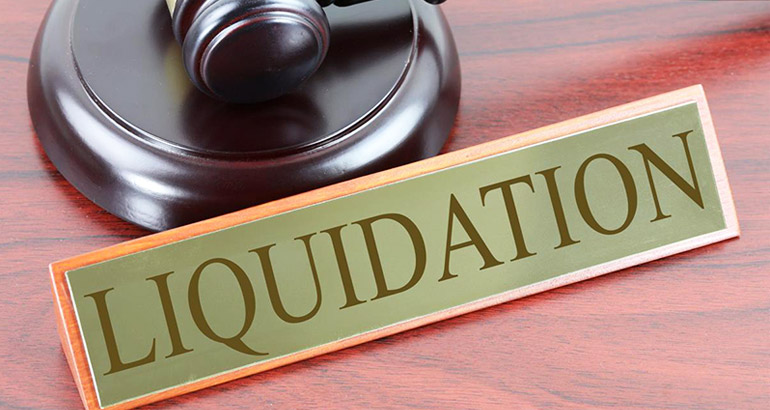The Basic Principles Of Company Liquidation
The Basic Principles Of Company Liquidation
Blog Article
Things about Company Liquidation
Table of ContentsThe smart Trick of Company Liquidation That Nobody is Talking AboutCompany Liquidation - TruthsThe Single Strategy To Use For Company LiquidationNot known Incorrect Statements About Company Liquidation The Best Strategy To Use For Company Liquidation
A liquidator is especially assigned to manage the ending up of a firm's events in order for it to be shut down generally when the company is going bankrupt. The liquidator is an objective 3rd party that manages the sale of business possessions in order to settle any type of arrearages.Their function includes, however is not limited to: Unbiased Overseer: A liquidator is entrusted with acting as an impartial third party to oversee the whole firm liquidation procedure. Produce Declaration of Matters: Liquidators have to develop a detailed statement of affairs record. This record is dispersed to lenders, detailing the current economic condition of the service at the time of its liquidation.
After the liquidation of a business, its existence is erased from Firms Home and it ceases to be a lawful entity. If supervisors navigated the process without problem, there would be no fines or individual responsibility for firm debts anticipated. Currently, with a clean slate, supervisors can discover new business possibilities, though professional consultation is suggested.
Company Liquidation - The Facts
For instance, if greater than 90% of all company shareholders concur, liquidation can happen on brief notification within seven days, the minimal legal notice for lenders. Nonetheless, generally, the bigger the liquidation and the more properties and funding business has, the longer the procedure will take. 'Do I need to pay to liquidate my firm?', the answer will certainly depend upon whether your organization has any possessions remaining when liquidating.

We recognize that no 2 firms coincide, which is why we will make the effort to get to understand your service so we can suggest the best program of action for you. We only work in your ideal passions, so you can be totally confident in the service we offer.
Some Known Facts About Company Liquidation.
In the UK, there is an established process to shutting down or reorganizing a restricted business, whether it is solvent or financially troubled. This process is referred to as liquidation and can just be dealt with by a licensed bankruptcy specialist (IP) based on the Insolvency Act 1986. There are 4 main kinds of company liquidation procedure: Lenders' Voluntary Liquidation (CVL); Compulsory liquidation; Management; and Members' Volunteer Liquidation (MVL).

In these situations, it is essential that the firm stops trading; if business proceeds to trade, the directors could be held directly liable and it can result in the insolvency practitioner reporting wrongful trading, called misfeasance, which may bring about legal activity. The directors assign a bankruptcy practitioner and as soon as this has been concurred and verified, there is a meeting with the investors.
Of program, if there are no investors, this step of the process is not required (Company Liquidation). The IP takes control of the firm and starts the company liquidation process. The supervisors are no much longer associated with what occurs, consisting of the sale of the company's possessions. If the supervisors desire any of the properties, they can alert the IP.
Some Of Company Liquidation
The primary difference is that the company's creditors applied to the court for an ending up order which compels the bankrupt business into a liquidation procedure. Financial institutions take this activity as a last resort because you can find out more they have not gotten repayment through various other forms of negotiation. The court appoints an insolvency practitioner, additionally called an official receiver, to perform the obligatory business liquidation procedure.
This kind of company liquidation is not volunteer and directors' conduct is reported to the UK's Assistant of State once the liquidation process has actually been completed. Any type of director that falls short to work together with the IP or has actually been involved in supervisor transgression, or a deceitful act, may result in severe repercussions.
It this article is used as a method to shield the firm from any type of lawful action by its lenders. The supervisors of the company consent to make regular payments to settle their financial debts over a time period. The selected manager handles the volunteer administration procedure, and obtains the payments which they then distribute to financial institutions according to the concurred amounts.
About Company Liquidation
This gives the firm with time to create a strategy moving forward to rescue the company and prevent liquidation. At this factor, supervisors hand control more helpful hints of the firm over to the selected administrator. If a company is solvent but the supervisors and investors intend to shut the organization, a Participants Voluntary Liquidation is the right option.
The firm liquidation procedure is handled by a liquidator selected by the supervisors and shareholders of the firm and they have to sign a declaration that there are no financial institutions staying. The liquidation procedure for an MVL resembles that of a CVL because possessions are understood yet the earnings are dispersed to the directors and the shareholders of the business after the liquidator's fees have been paid.
Report this page